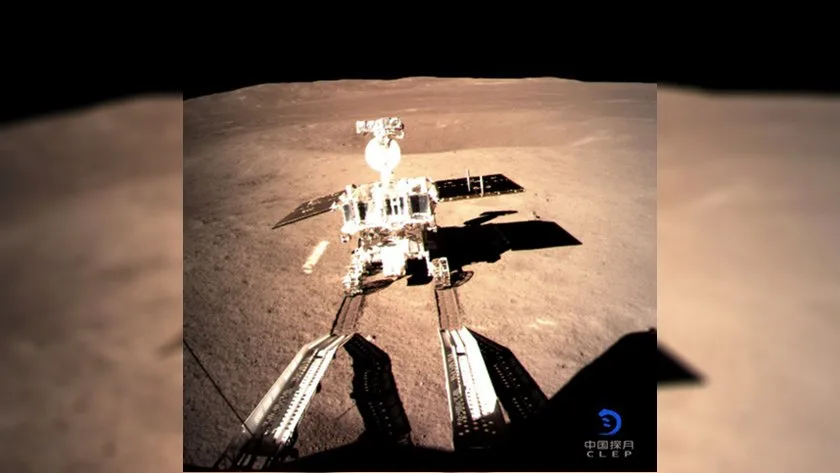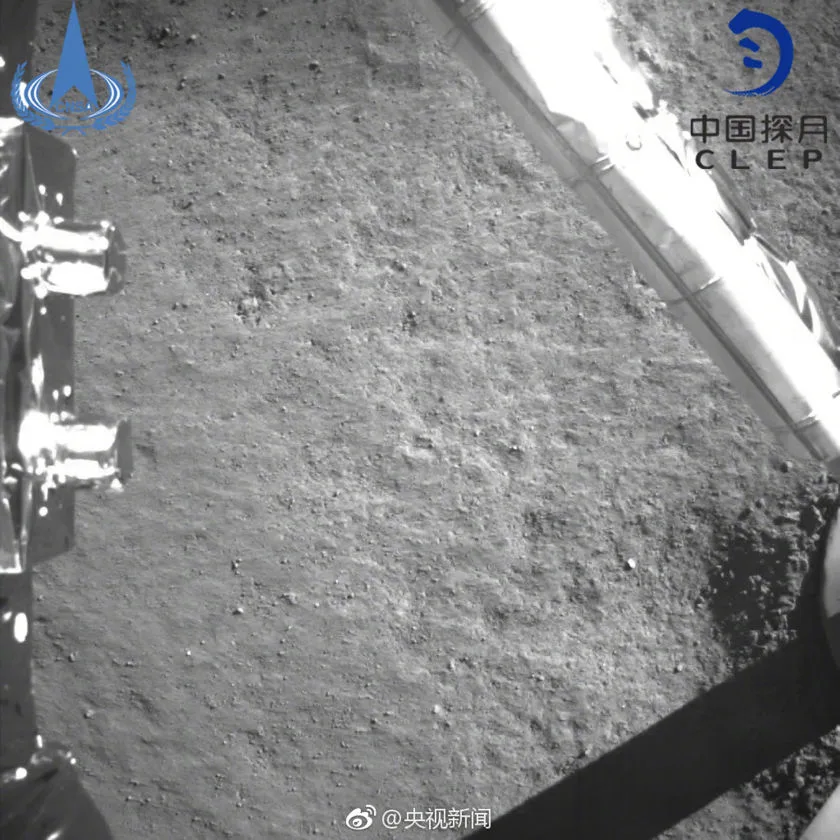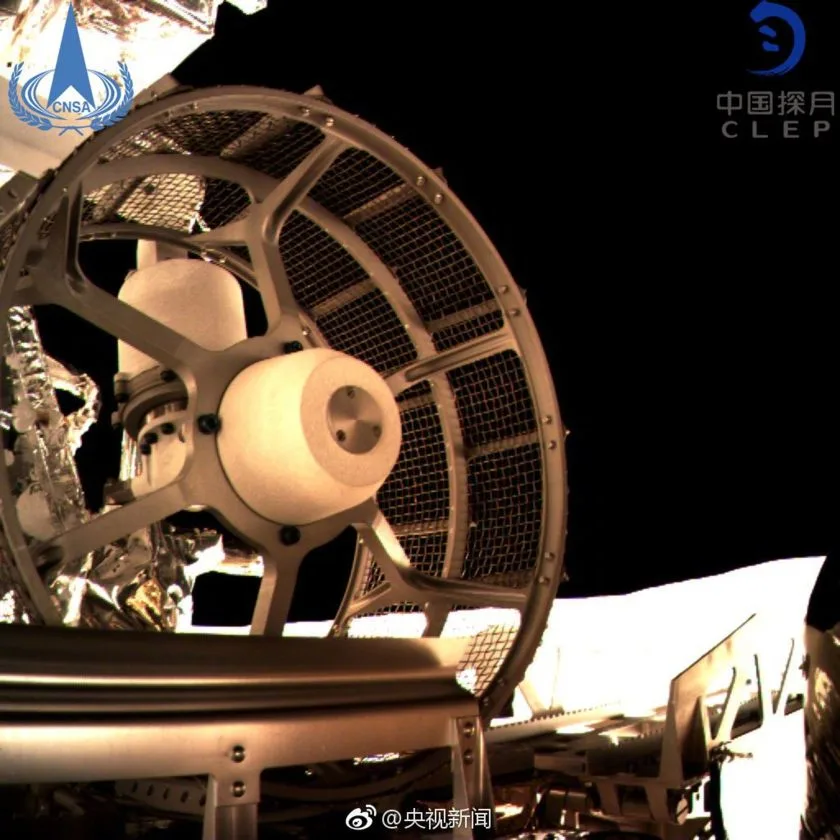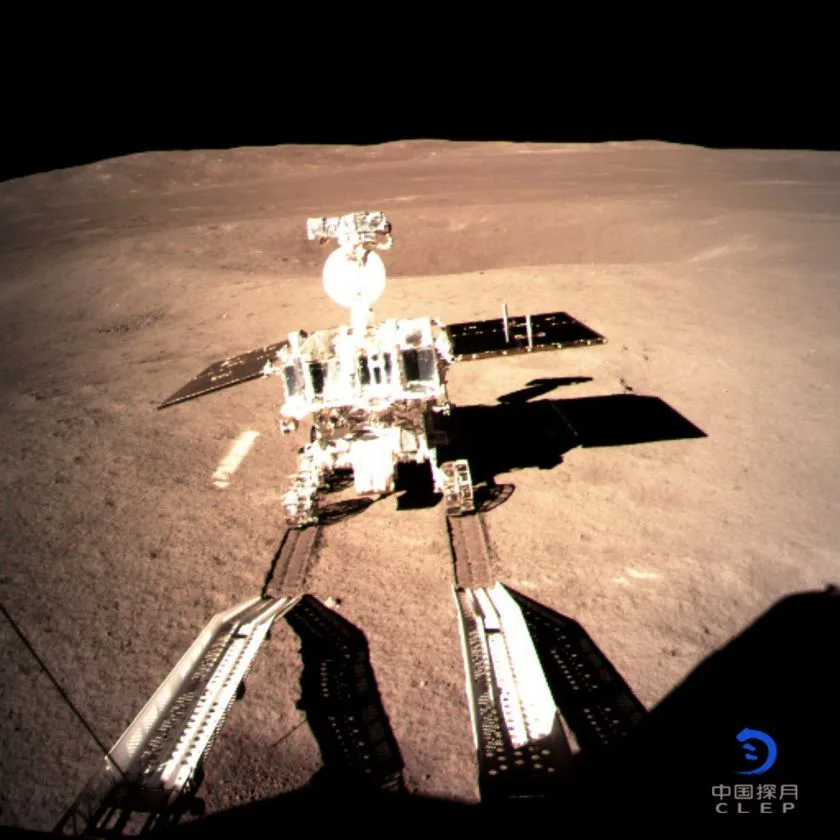
China's Chang'e-4 makes historic landing on Moon's far side
For the first time in human history, we have a close-up look of what it's like on the far side of the Moon, after China's Chang'e-4 lunar lander, and its Yutu-2 rover, touched down there, early Thursday morning.
It's hard to believe it's been nearly 60 years since humans were treated to our first glance at the far side of the Moon.
Back in 1959, it was the Soviet Luna 3 probe that took that first snapshot and beamed it back to Earth. Roughly 10 years later, it was American astronauts putting the first boot prints on the Moon's dusty surface. Now, in 2019, China's space program has scored its own piece of lunar history, as it becomes the very first nation to land a robotic mission on the far side of the Moon.
Jia Yang, deputy chief designer of the Chang'e-4 probe, from the China Academy of Space Technology (CAST), called the milestone "a perfect display of human intelligence."

An image of the far side of the Moon, shot by China's Chang'e-4 lander upon touchdown, Thursday morning. On the left is the edge of the lander's body, while to the right part of the lander's leg, as well as its foot pad, which has partially sunk into the lunar regolith. Credit: CNSA/CLEP

The first colour photograph returned from the surface of the far side of the Moon. Chang'e-4's rover deployment camera took the image, which shows a nearby dust-filled crater, and the rover deployment ramps at the top. Credit: CNSA/CLEP
Why is this landing so significant?
The Apollo 8 astronauts demonstrated the problem with the far side of the Moon quite well as they made three orbits around before setting off on the return trip to Earth. Each time their spacecraft slipped beyond the limb of the Moon, they were plunged into radio silence from Earth.
This becomes especially problematic for anything that stays on the far side of the Moon, which includes anything you set down on the surface there. This is due to the Moon being 'tidally-locked' to Earth, meaning that, because of its gravitational attraction to Earth, the time it takes for the Moon to rotate once on its axis exactly matches the time it takes to make one orbit around the Earth. Thus, the Moon always presents the same side of its face to us, and the other side of the Moon cannot be seen from Earth.
So, without a dedicated satellite placed in the right position out in space, any robot that set down on the mysterious far side would be completely out of contact with its controllers on Earth. Even if the robot was able to conduct all of its operations and experiments perfectly, on its own, there would be no way for it to transmit what it finds back home. Its fate would be a complete mystery to us without some kind of support.
Thus, given the resources required to not only put a lander or rover down on the surface, but also to put a spacecraft far enough out to act as a communications relay, it turns the mission into something far more expensive than setting something down on the near side, or putting an orbiter around the Moon.
Watch below as NASA's Lunar Reconnaissance Orbiter presents us with a full view of the near side and far side of the Moon.
China launched their new mission in two parts, to solve this problem.
They sent their new Queqiao satellite into space back in May, placing it into a circular 'halo' orbit around Lagrange Point 2 in mid-June. Situated about 1.5 million km away, beyond the Moon's orbit, and on the far side of Earth from the Sun, this provides Queqiao with an excellent vantage point to act as a communications relay from the far side of the Moon back to Earth.
With this crucial piece in place, China then launched Chang'e-4, atop a Long March 3B rocket, on December 8, 2018, for its targeted touchdown on the Moon's far side, in the new year.
The lander touched down in Von Kármán crater, in the Moon's southern hemisphere, at 11:26 p.m. ET, Jan 2, 2019 (10:26 a.m. Beijing time, Jan 3).
Von Kármán is a 160 km wide impact crater, nestled in a larger, 2,500-km-wide crater known as the South Pole–Aitken basin. This immense feature is the site of an ancient massive impact event, and although it has been imaged extensively from orbit, this is the first time it can be studied in detail from the surface.
Chang'e-4 is carrying the Yutu-2 rover, which it deployed shortly after landing, at 7:22 a.m. ET, Jan 3, 2019 (6:22 p.m. Beijing time).

Chang'e-4 captured this image just prior to deploying its rover, Yutu-2. Pictured are the rover's wheel (left), the lander deck (bottom), and the deployment ramps (bottom right). Credit: CNSA/CLEP

Yutu-2 rolled off the Chang'e-4 lander, and onto the surface of the Moon's far side, at 14:22 UTC, Jan 3, 2019. Note that the deep shadows projected by the rover show that there is no true 'dark side' of the Moon. Only a thin crescent of the moon is lit from Earth's side today, but most of the lunar surface is lit on the far side. Credit: CNSA/CLEP
Additionally, the lander is carrying live samples of insect eggs and plant seeds, in a sealed 'biosphere' chamber, to test how these organisms can survive with the kind of radiation exposure they receive on the lunar surface. Chang'e-4 also has science instruments, including a spectrometer that will test the hypothesis that the far side of the Moon is an excellent location from which to study the universe via radio astronomy.
"The far side of the moon is a rare quiet place that is free from interference of radio signals from Earth," spokesperson for the Chang'e-4 mission, Yu Guobin, said, according to China's news agency Xinhua. "This probe can fill the gap of low-frequency observation in radio astronomy and will provide important information for studying the origin of stars and nebula evolution."
Sources: CBC/AP | BBC | Xinhua | China Lunar Exploration Project | The Planetary Society










